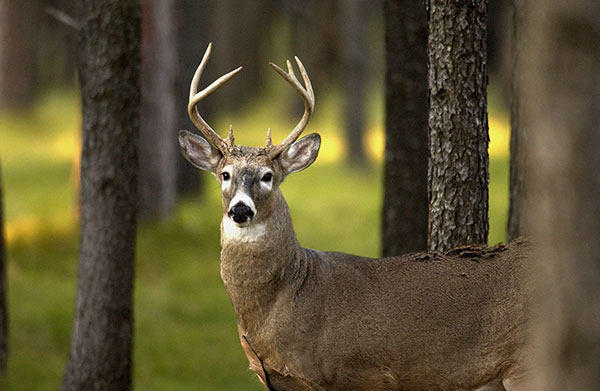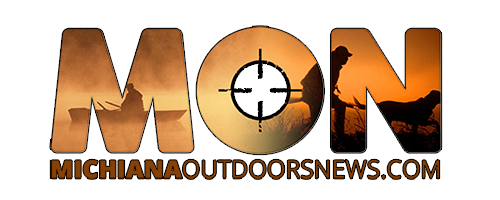MDNR Report

Deer hunters taking part in Michigan's Oct. 1-Nov. 14 archery season should be seeing a strong statewide harvest, even as they encounter varying conditions – from the results of heavy snowfall in parts of the Upper Peninsula to an outbreak of epizootic hemorrhagic disease in the southern Lower Peninsula.
The Michigan DNR’s 2025 deer hunting preview indicates this year’s deer harvest could be strong overall – mirroring a robust 2024 – but that hunters should be aware of several factors.
In addition to the potential for lower deer numbers in high-snowfall areas of the U.P. and the ongoing EHD outbreak in the southern Lower Peninsula, the devastating March 2025 ice storm in the northern Lower Peninsula could affect hunters as well.
"Overall, the 2024 deer season was a pretty good one, with hunter participation and deer harvest all generally steady or increasing from the prior year," said Brent Rudolph, the deer, elk and moose management specialist for the DNR’s Wildlife Division. "Variability within each region occurs every year, but for 2025 the wild cards include the borderline severe winter conditions in the U.P., potential ice storm impacts on access to hunting locations in the northern Lower Peninsula and the ongoing EHD outbreak in the southern Lower Peninsula. Hunters always benefit from being prepared, and these are extra factors to look out for this year."
EHD is caused by a virus transmitted to white-tailed deer by a biting midge (or small fly). The disease is not sustained in the deer population, and outbreaks have not had significant long-term effects on Michigan’s deer herds. But deer mortality can be intense in small areas and persist for a few years.
After being confirmed in 15 counties in 2024, EHD has been confirmed in eight counties this year as of mid-September: Calhoun, Cass, Eaton, Jackson, Lenawee, Mecosta, Van Buren and Washtenaw. EHD will likely emerge in additional southern Lower Peninsula counties until a good frost can kill off the midges that transmit the virus, Rudolph said.
The edibility of venison is not impacted by EHD, and there is no evidence humans can contract the virus either from the midge or from handling and eating venison.
In the northern Lower Peninsula, deer are not expected to be significantly impacted this year, but hunter access may be affected by the lingering effects from the 12-county ice storm. The DNR has worked hard to clear roads and open trails, but backcountry two-tracks might remain inaccessible and hunting areas might look vastly different. Many downed trees and limbs remain in the woods, and salvage timber harvest will continue for some time.
Michigan’s statewide archery deer season runs Oct. 1-Nov. 14 and Dec. 1-Jan.1, 2026. The statewide regular firearm season is Nov. 15-30, and muzzleloader season is Dec. 5-14. For more information on additional deer hunting season dates, licenses and regulations, visit the DNR’s deer webpage.
Southern Lower Peninsula Expectations
The total number of Southern Lower Peninsula (SLP) hunters in 2024 was similar to the prior year. Buck harvest was also similar, but antlerless harvest increased compared to 2023. Statewide, the early and late antlerless seasons combined with the extended late antlerless season accounted for 26% of the total antlerless deer harvest, and these seasons (plus the January archery season during which hunters heavily emphasized antlerless harvest) were all open in the SLP. SLP hunters invested more time than hunters in other regions, averaging 14 days across all seasons.
Epizootic hemorrhagic disease (EHD) was confirmed in 15 counties in southwestern and south central Michigan in 2024 and emerged again in summer of 2025, with seven counties confirmed as of mid-September. An overview of past and ongoing counties affected by EHD can be found at the DNR Epizootic Hemorrhagic Disease (EHD) in White-Tailed Deer page. EHD is not sustained within the deer population; it is caused by a virus that is transmitted to white-tailed deer by a biting midge. EHD outbreaks have not been shown to have significant long-term effects on deer populations in Michigan, but deer mortality can be intense in small geographic areas and local impacts may persist for a few years. EHD will likely be confirmed in additional SLP counties until a good frost occurs, which kills off the midges that transmit the virus.
Outside of local areas that have experienced pronounced impacts from EHD, deer numbers remain high throughout much of the region. Routinely mild winters and abundant summer foods mean deer are rarely negatively affected by winter mortality. Spring rains did delay planting or flood early planted crops in some areas, and summer drought stressed some crops in growing seasons, but warm weather and some beneficially timed rainfall led to largely favorable growing conditions. Many field offices reported an increase in crop damage complaints.
What to know…
Hunters pursuing an antlered buck in the SLP with a single deer license or regular tag of the combo deer license must be certain the deer has at least one antler three inches or longer. Antlered deer taken using the restricted tag of the combo deer license must have four or more antler points (each at least one inch long) on at least one side. SLP hunters also have the option of using a single deer or combo deer license (both the regular and restricted tags) to harvest an antlerless deer. No antlerless license is necessary to use this option. All of these options are described as part of the antler point restrictions (APRs) in the region. Consult the Lower Peninsula APRs section of the 2025 Deer Hunting Regulations Summary, available through the Michigan DNR Hunt Fish app or in digital versions accessible through links on our Deer page. Review the APR requirements based on the options you have for licenses to purchase and the seasons in which you’ll be hunting.
All hunters with a universal antlerless deer license can also take an antlerless deer during any open season in the SLP. Individuals may purchase up to 10 universal antlerless deer licenses, statewide, per license year, for $20 each. This limit includes discounted DMU 487 Antlerless Deer Licenses, which are available for $5 each.
From Dec. 1 through Jan. 11, hunters can purchase up to 10 extended late antlerless deer licenses for $5 each. These licenses do not count toward the purchase limit of 10 universal antlerless deer licenses. The extended late antlerless firearm deer season takes place on public and private lands Jan. 2–11, 2026, within Allegan, Barry, Bay, Berrien, Branch, Calhoun, Cass, Clinton, Eaton, Genesee, Gratiot, Hillsdale, Huron, Ingham, Ionia, Isabella, Jackson, Kalamazoo, Kent, Lapeer, Lenawee, Livingston, Macomb, Mecosta, Midland, Monroe, Montcalm, Muskegon, Newaygo, Oakland, Ottawa, Saginaw, Sanilac, Shiawassee, St. Clair (excluding DMU 174), St. Joseph, Tuscola, Van Buren, Washtenaw and Wayne counties.
The January archery season will take place on public and private lands in Huron, Kent, Lapeer, Macomb, Oakland, Sanilac, St. Clair (except DMU 174), Tuscola, Washtenaw and Wayne counties Jan. 2-31.
For information on other seasons and licenses, consult the 2025 Deer Hunting Regulations Summary, available through the Michigan DNR Hunt Fish app or in digital versions accessible through links on our Deer page.
Baiting is banned in the entire Lower Peninsula, including both public and private lands. The only exception for the Lower Peninsula baiting ban is hunters with disabilities who meet specific requirements may use bait during the Liberty and Independence hunts only. Hunters with disabilities that wish to bait during the Liberty and Independence hunts should review additional rules in the baiting section of the 2025 Deer Hunting Regulations Summary in the Michigan DNR Hunt Fish app or in digital versions available through links on our Deer page.
Chronic wasting disease is still present in many counties in southern Michigan and continued monitoring is still a priority for the DNR. However, while the DNR continues to get baseline data for CWD presence across the state, the department is not actively seeking samples from counties in the SLP this year.
Though extensive CWD sample collection has already been done in the SLP and resources are being prioritized for collecting data by requesting hunter submission of samples in other parts of the state, hunters in a county with known CWD cases or anywhere else around the state are still eligible for free CWD testing by using a free lymph node extraction kit that includes overnight shipping. Kits can be picked up from the locations listed on the CWD testing page. Kits include instructions for hunters to extract lymph nodes themselves and submit them to Michigan State University Veterinary Diagnostic Laboratory (MSU VDL) for CWD testing. Results from deer submitted to MSU VDL will be sent directly to the hunter and will not appear on the DNR lab results webpage. The DNR is pleased to provide these resources and empower hunters across the state to assist with their own testing efforts. Kits include instructions for hunters to extract lymph nodes themselves and submit them to Michigan State University Veterinary Diagnostic Laboratory (MSU VDL) for CWD testing. Results from deer submitted to MSU VDL will be sent directly to the hunter and will not appear on the DNR lab results webpage.
Where to go…
An overview of publicly accessible lands in the SLP is available by consulting the DNR Where to hunt page. Boundaries of all these lands may be viewed by accessing the Mi-HUNT link on that page.
A wild card for SLP hunters this year will be contending with local areas that have been impacted by EHD. Venison harvested in areas affected by EHD is safe for consumption. It’s not recommended to consume any animals that are visibly sick, but healthy deer harvested from areas where EHD has been present are still safe to eat. While prolonged EHD presence since July or early August can produce substantial impacts to a local deer herd, its distribution on the landscape can be extremely variable. Some locations a short distance from severely impacted areas might not experience any effects of EHD, so even portions of EHD-affected counties are likely to continue to need considerable antlerless harvest efforts. Understanding your local conditions and deer herd should drive your harvest decisions this fall.
Those who suspect they have found a deer that has contracted or died from EHD may submit a diseased wildlife report through the DNR’s Eyes in the Field online system.




